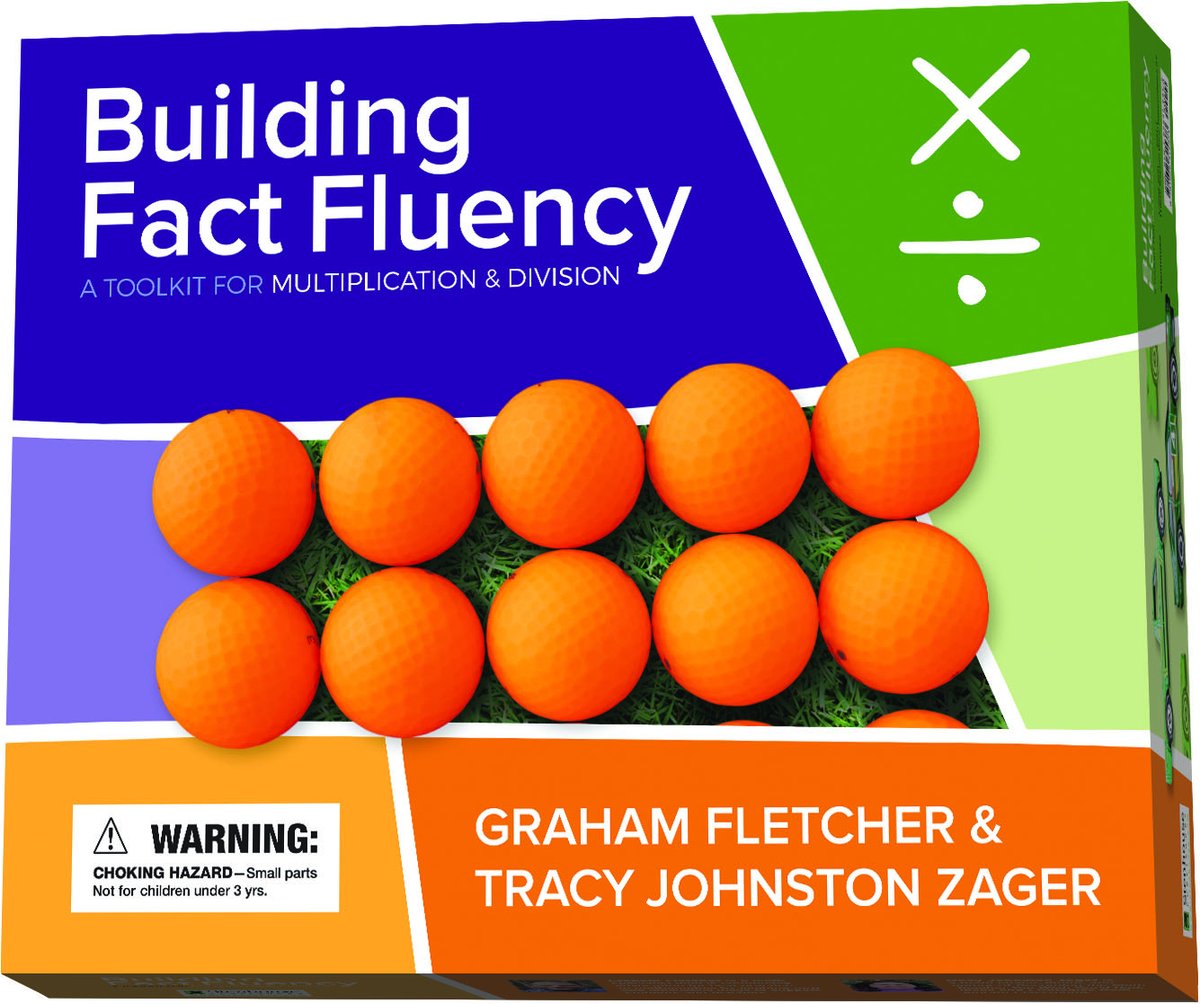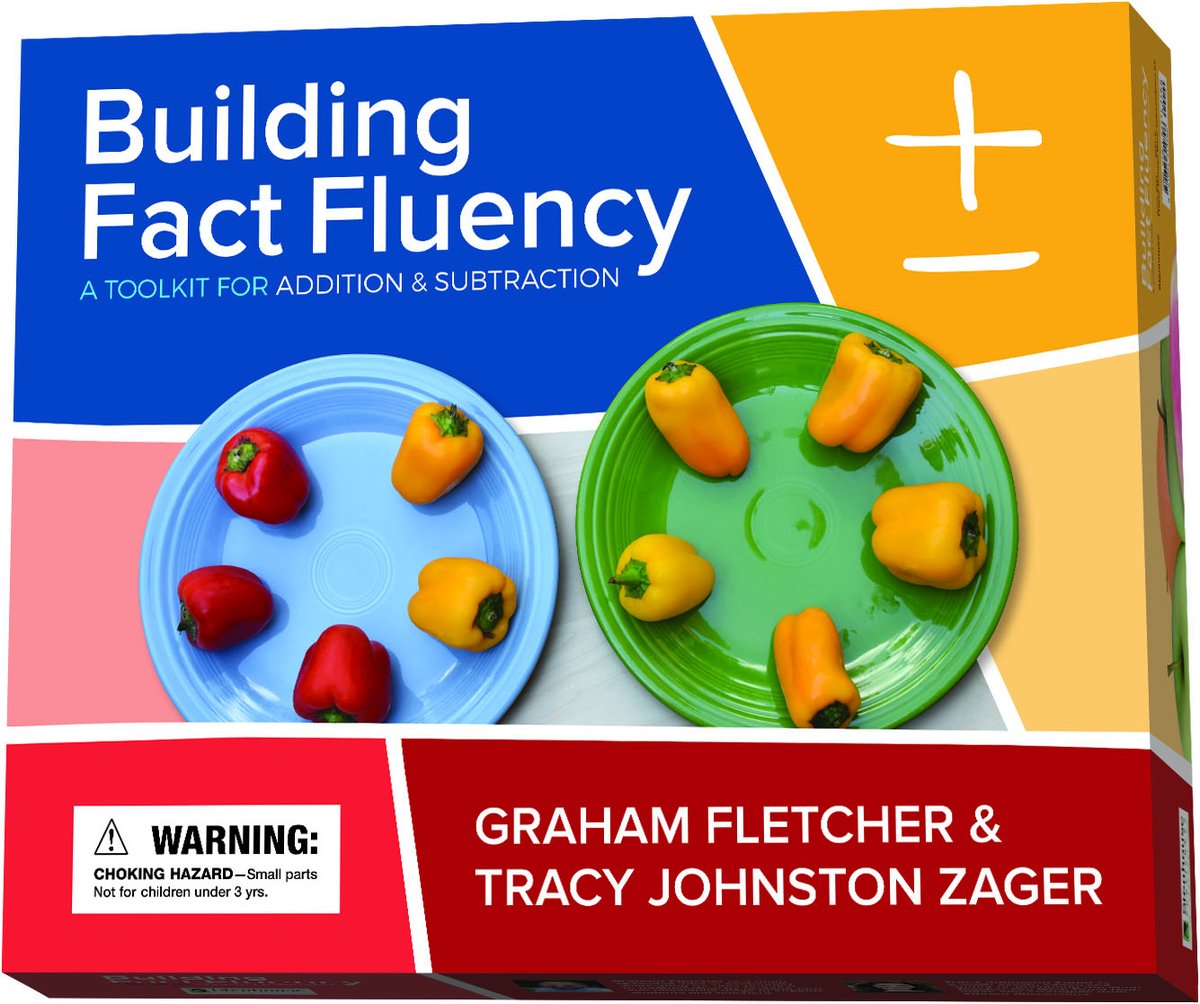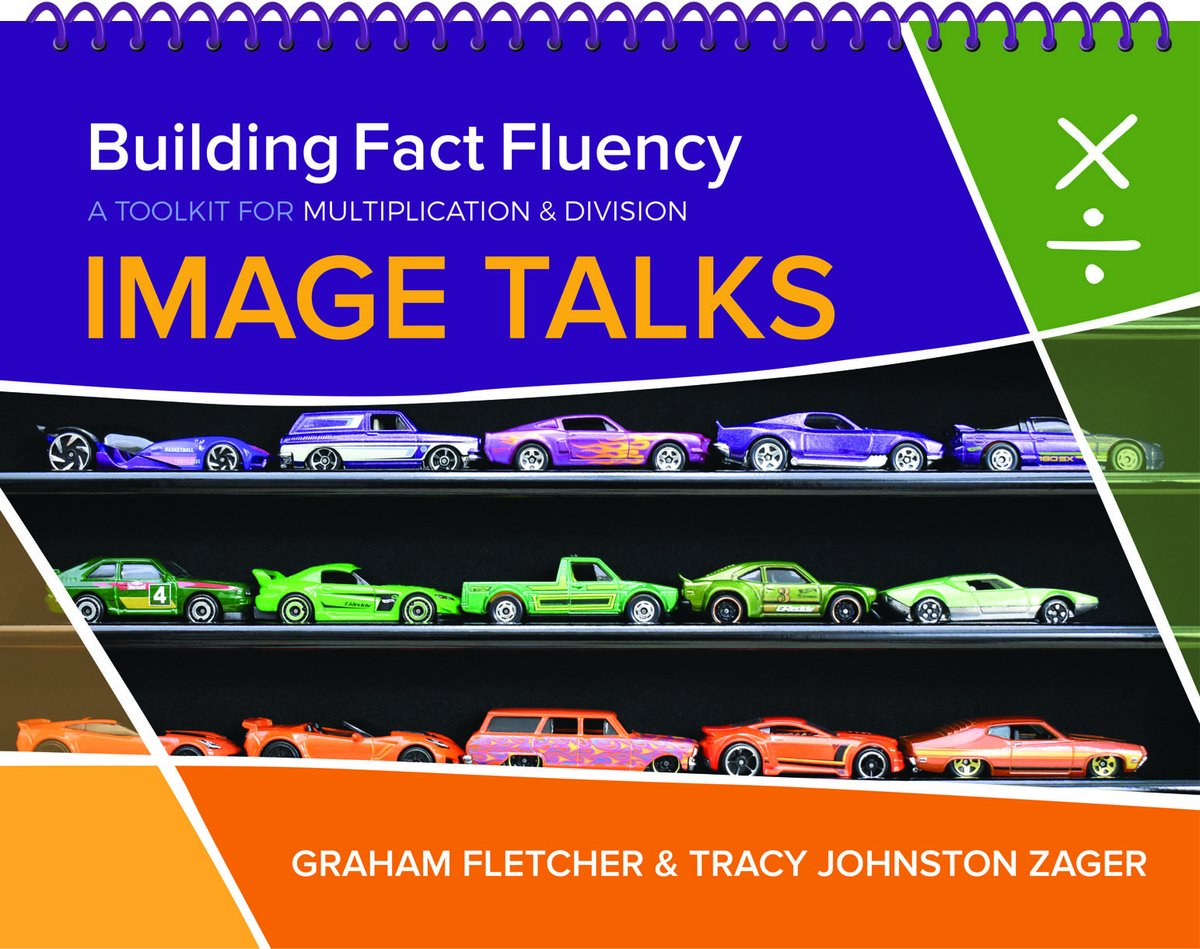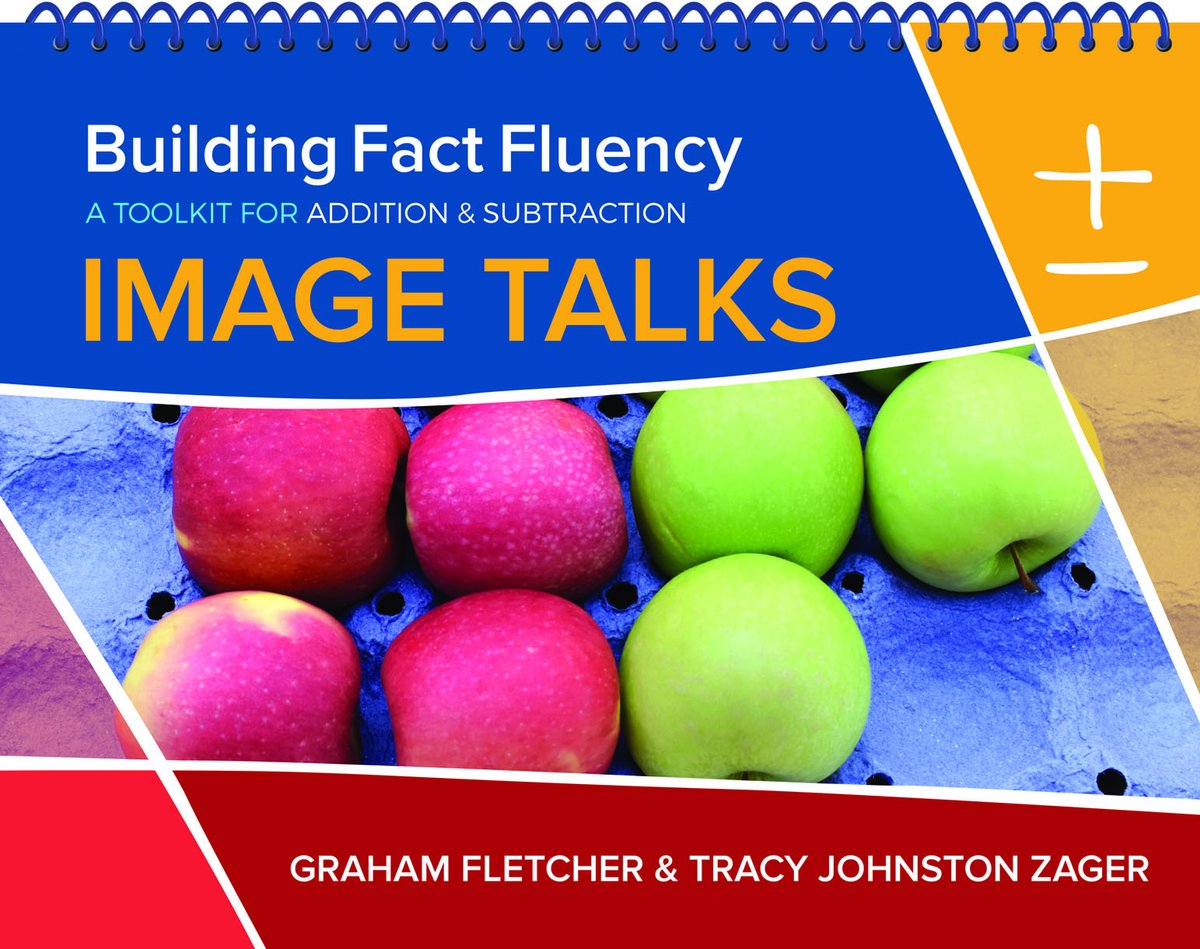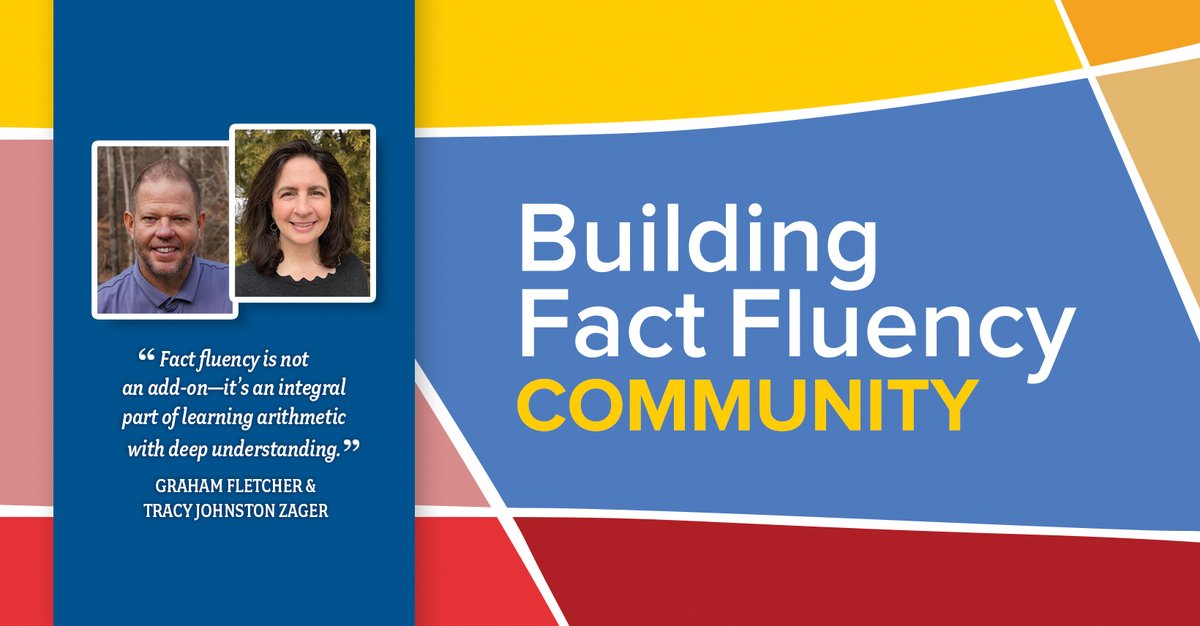1/n Several years ago, frustrated by what was out there, I started wondering what a high-quality resource for math facts could look like. How could we build understanding and exploration of the properties and operations while students accumulated number combinations?
2/n How could we turn what is often the most dreaded time of the math day--for both students and teachers--into the most eagerly awaited for? How could we build confidence and problem solving in students of all ages?
3/n How could we build teacher capacity by increasing formative assessment strategies, content knowledge, curiosity, and joy--all while thinking about math facts?
4/n How could we cultivate conversations and discourse, and create conditions for teachers to listen to students& #39; mathematical thinking--and make sense of what they heard? How could we build mathematical community?
5/n How could we turn math facts from a locked gate for students (who often aren& #39;t allowed to progress into rich problem solving until they learn their facts--and this happens most with students from historically excluded communities) into a gateway instead?
6/n In other words, how could we create a resource that matches what we know--that fact fluency isn& #39;t just some prerequisite, but is actually an OUTCOME of rich problem solving and high quality, purposeful, meaningful practice?
7/n How could we think about accessibility for all students, right from the outset? How could we remove barriers to access (such as an emphasis on speed), invite as many students as possible into the math, and keep re-inviting them, all year long?
8/n As soon as I started wondering what it would look like to "do facts right," I knew who I needed to work with. My close friend and colleague, @gfletchy. I remembered this ignite talk he& #39;d given, a million years ago. https://www.youtube.com/watch?v=1I0Hi-wPd_E&ab_channel=GrahamFletcher">https://www.youtube.com/watch...
9/n I knew how passionately we both felt about this topic. And I knew how brilliant he was at task design, especially multimedia tasks that engage kids through visual storytelling--literally the opposite of a mad minute with 50 problems on it.
10/n We sat down for lunch at the awesome NWMC conference in Whistler, Oct 2018, and I asked if we should take on facts. After five minutes of talking it through, Graham was all in. "Let& #39;s do it!!!!!"
11/n Right away, Graham knew contexts would be key. We& #39;ve always taught math facts through decontextualized, numeric, symbol-driven memorizing. Blech. He saw that we could start with visuals--start with everyday objects--start with photos and 3-Act Math Tasks.
12/n We started brainstorming ideas for what types of tasks would make sense. CGI story problems, embedded in the contexts. Thoughtful use of mathematical tools. Games that are actually FUN to play and involve both mathematical and game strategy.
13/n And we were off and running! Graham was the author, and I was the editor, and #BuildingFactFluency was born. We worked together beautifully.
14/n Over time, though, our working relationship evolved. We started thinking everything through together, especially what teachers would need to be successful with the BFF toolkit. We built complementary, embedded professional learning: a facilitator& #39;s guide and video support.
15/n We realized that these kits took the best of both of us. By the time we were wrapping up multiplication/division, we just had to acknowledge this shift that happened, which was that we were full thought partners who built this thing together.
16/n We made a quick video to announce that news here. :)
17/n So from here on out, you& #39;ll see both our names and both our mugs on the #BuildingFactFluency toolkits.
18/n (Those colors look funny on my screen today--Twitter is compressing and making them neon--but trust me, they& #39;re gorgeous!)
19/n Anyway, all that& #39;s to say, I& #39;m just very excited to share this work. I feel so hopeful about the potential impact here. So many students are kept out of math because of facts. Imagine a world where facts are taught as an entry in to rich math?
20/n That teachers and students explore the properties with single-digit and multidigit numbers, so that students think multiplicatively and can make sense of 12 x 25 a variety of ways because they& #39;ve made sense of 6 x 8 a variety of ways?
21/n And most important, that students see themselves as mathematical thinkers who can solve problems because they& #39;ve solved so many problems before? They know how to use what they know to figure out what they don& #39;t yet know? With resourcefulness and confidence?
22/n Graham and I are both coaches, always looking to build teachers up. We designed BFF to build teachers up. From content knowledge to questioning strategies, we are hoping what teachers learn while teaching BFF will spill over into the rest of the math block.
23/n I& #39;m gonna make myself stop because I could tweet about this all day. I just feel really proud of what we& #39;ve done. It has been and continues to be nothing but joy to be thought and work partners with @gfletchy on a project that means so much to both of us. All the feels.
24/n Addition/subtraction is available now (and all the new press runs have the revised box :). We are working around the clock to have multiplication/division ready for you for back to school this fall. If you want to stay tuned, info here--> https://page.stenhouse.com/building-fact-fluency-family">https://page.stenhouse.com/building-...
25/25 And come chat with us in the fb fact fluency community! https://www.facebook.com/groups/buildingfactfluency">https://www.facebook.com/groups/bu...
/fin
/fin

 Read on Twitter
Read on Twitter